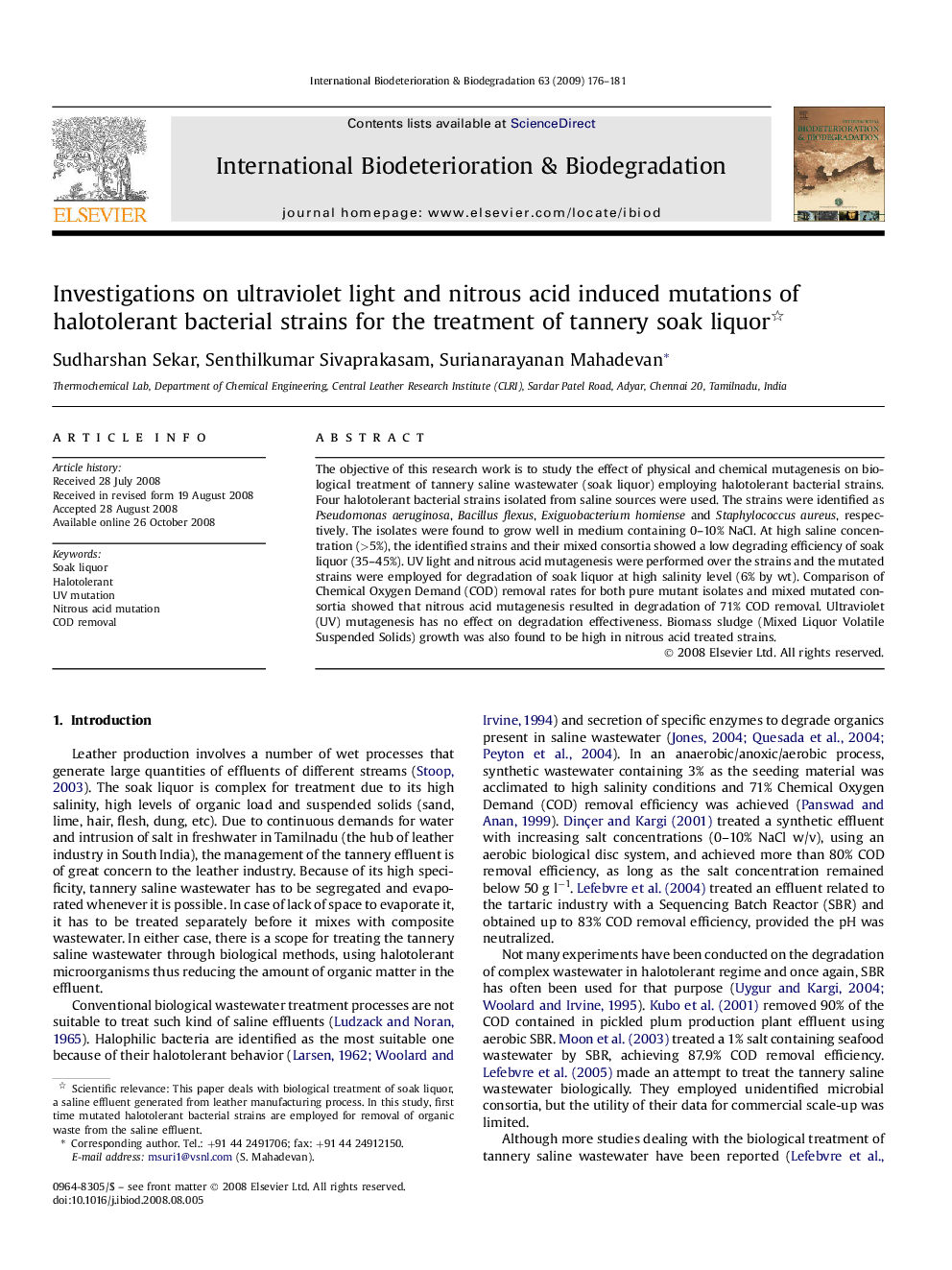| Article ID | Journal | Published Year | Pages | File Type |
|---|---|---|---|---|
| 4365436 | International Biodeterioration & Biodegradation | 2009 | 6 Pages |
Abstract
The objective of this research work is to study the effect of physical and chemical mutagenesis on biological treatment of tannery saline wastewater (soak liquor) employing halotolerant bacterial strains. Four halotolerant bacterial strains isolated from saline sources were used. The strains were identified as Pseudomonas aeruginosa, Bacillus flexus, Exiguobacterium homiense and Staphylococcus aureus, respectively. The isolates were found to grow well in medium containing 0-10% NaCl. At high saline concentration (>5%), the identified strains and their mixed consortia showed a low degrading efficiency of soak liquor (35-45%). UV light and nitrous acid mutagenesis were performed over the strains and the mutated strains were employed for degradation of soak liquor at high salinity level (6% by wt). Comparison of Chemical Oxygen Demand (COD) removal rates for both pure mutant isolates and mixed mutated consortia showed that nitrous acid mutagenesis resulted in degradation of 71% COD removal. Ultraviolet (UV) mutagenesis has no effect on degradation effectiveness. Biomass sludge (Mixed Liquor Volatile Suspended Solids) growth was also found to be high in nitrous acid treated strains.
Keywords
Related Topics
Life Sciences
Environmental Science
Environmental Science (General)
Authors
Sudharshan Sekar, Senthilkumar Sivaprakasam, Surianarayanan Mahadevan,
